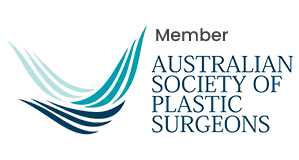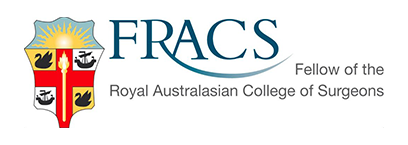Dr Nathan Stewart is a Plastic and Reconstructive surgeon who specialises in Abdominoplasty surgery in Perth.
Abdominoplasty is a cosmetic and reconstructive surgery that involves removing excess skin and fat from the abdomen to create a tighter, smoother profile while tightening your abdominal muscles.
An abdominoplasty / tummy tuck is a cosmetic surgery that alters the patient’s appearance by removing excess skin and reconstructing abdominal muscles. According to a 2020 survey by the International Society of Aesthetic Plastic Surgeons, abdominoplasty is one of the top five most common cosmetic surgeries worldwide.
This procedure is commonly performed with liposuction. Liposuction is only limited to removing fat and can be done in other body parts.
A panniculectomy removes the skin without tightening the underlying muscles and is not considered a cosmetic procedure.
Why people choose abdominoplasty surgery:
Abdominoplasty / tummy tuck surgery is an intensive surgical procedure, and you may have to wait for about a year to achieve full recovery. The success of your surgery depends on multiple factors, and that’s why you need to get everything right before going in.
There are two main types of abdominoplasty surgeries, depending on the extent of the surgery.
Partial Abdominoplasty (also called mini-abdominoplasty) is done for people without significant excess skin overlying their abdomen.
The surgeon makes smaller incisions and separates your skin between the incision line and your belly button. From here, the corrections are done without shifting the position of your navel. Partial abdominoplasty takes a short time, usually less than two hours.
During a complete abdominoplasty / tummy tuck, the surgeon will make an incision at your bikini line and extend it to the hips, depending on how much excess skin is on your abdomen. Ancillary liposuction may or may not be performed with this surgery.
Another incision is made to free up your belly button from the surrounding tissue. The surgeon then begins the corrective process. The incisions are subsequently sutured, and drainage tubes may be placed under your skin for a few days.
Many of our patients request a ‘mons pubis’ lift as a separate procedure. This mons lift is achieved naturally as part of the abdominoplasty.
Like any other surgery, an abdominoplasty may lead to side effects. With experienced hands, chances of having these complications are limited. Some of the risks you should be aware of are:
Dr Stewart will provide you with a 4-6 recovery guideline. This will include what you can and can’t do for the 4-6 weeks after surgery. You will wear a compression garment after your surgery for 6 weeks, 24/7
Until you reach full recovery,
Dr Stewart will provide you with his mobile phone number after surgery for any concerns that may arise. You will be provided with an additional information sheet on discharge from the Hospital. Our team are here to support you throughout your surgical journey, please always reach out to our team at admin@drnathanstewart.com.au should you have any questions.
Usually, tummy tucks are considered cosmetic procedures and are not covered by insurance. However, in certain cases such as massive weight loss or medical conditions such as rectus divarication, insurance may cover the procedure. Dr Stewart will discuss with you during your consult if you qualify for a medicare item number.
Like any surgical procedure, tummy tuck carries some risks such as infection, bleeding, and adverse reactions to anesthesia. Dr Stewart will discuss these and other potential risks during your consultation.
Yes, a tummy tuck can be combined with other procedures such as liposuction, a thigh lift, or a breast augmentation.
A tummy tuck involves making an incision, so there will be a scar. The scar is typically located below the bikini line and can be easily concealed with clothing.
You can expect to spend two nights in hospital.
Recovery after tummy tuck surgery can take several weeks, and most patients return to work after 2-3 weeks. Full recovery can take up to several months, and exercise should be limited until cleared by Dr Stewart.
The procedure is typically associated with some discomfort, but this can be managed with pain medication.
The procedure is performed under general anesthesia and can take 2-3 hours. It involves making an incision above the pubic area, removing excess skin and fat, and tightening the abdominal muscles. The incision is then closed with sutures. Drains are left in place for 3-10 days.
Ideal candidates for tummy tuck are those who are in good health, have excess skin and fat in the abdominal area, and have separated abdominal muscles due to weight gain, pregnancy, or aging.
Abdominoplasty is a cosmetic surgical procedure to remove excess fat and skin from the abdominal area and tighten the muscles to create a flatter, smoother tummy.
What Should You Do Now?
Want to see results from our past patients? Be sure to view our gallery page to see before and after images. Dr Nathan Stewart is available for consultation in Perth and Bunbury. If you have any questions or would like to know more about the procedure, contact Dr Stewart today.
Affiliations




After your abdominoplasty / tummy tuck surgery, it is important that you take as much time as you need to rest and recover. You will be provided with a number of information sheets and checklists to prepare you for your recovery, including any symptoms to watch out for and tips to keep you as healthy and comfortable as possible during this time.
Following the procedure, you will likely experience some moderate discomfort. Dr Stewart will discuss your pain medication needs with you and tailor a dosage and schedule to suit your individual circumstances. Symptoms should subside within a few weeks. You may need to wear compression garments for several weeks following your surgery.
Should you have any questions at any time, please don’t hesitate to contact Dr Stewart or the team!